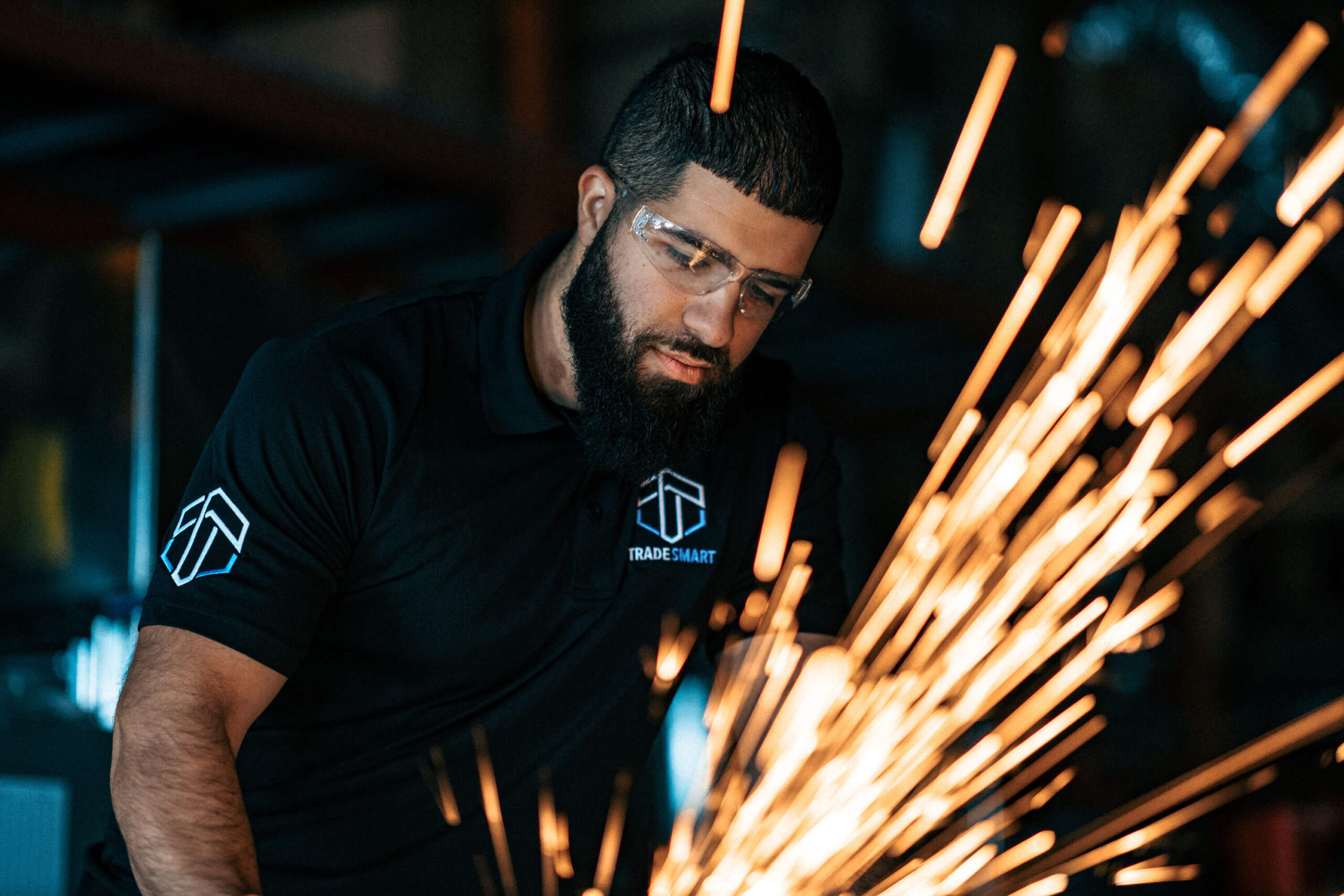How Are Tradespeople Going to Acquire Soft Skills When Most Colleges Do Not Teach Them?
![]() tradesmart23
on
March 18, 2025
tradesmart23
on
March 18, 2025
How Are Tradespeople Going to Acquire Soft Skills When Most Colleges Do Not Teach Them?

25%: The Percentage of Tradespeople Who Need to Upgrade Their “Soft Skills” in the Next Five Years
The Missing Piece in Trades Education
Most people assume that becoming a skilled tradesperson is all about mastering technical skills—welding a perfect seam, wiring a circuit flawlessly, or installing HVAC systems with mechanical precision. But here’s a cold, hard fact: technical expertise alone won’t keep a tradesperson employed, let alone help them advance in their career. A 2021 RBC report revealed that 25% of all skilled tradespeople in Canada will need to upgrade their skills within the next five years. Not just technical or digital skills, but soft skills—communication, teamwork, problem-solving, and customer interaction.
And yet, if you walk into most trade schools or pre-apprenticeship programs, you’ll notice an alarming trend: these essential professional skills are nowhere to be found in the curriculum. While technical training is rigorous, there is little to no structured learning on how to be prepared, focused, and reliable in the workplace—skills that separate a good tradesperson from an indispensable one.
Why Soft Skills Matter More Than Ever
If the trades were purely about technical expertise, every skilled welder, carpenter, and electrician would be thriving. But the reality is far different. Employers aren’t just looking for technical wizardry, especially in new employees; they want workers who can think critically, solve unexpected problems, and interact professionally with clients and team members. The Adecco Staffing USA survey found that 44% of executives identified a lack of soft skills as the biggest gap in the workforce.
A tradesperson who can explain a project to a client in plain terms, adapt to unforeseen challenges, and work seamlessly with colleagues is an asset. Meanwhile, someone who struggles with communication, avoids teamwork, or lacks customer service skills risks losing projects that a company has spent thousands of dollars acquiring. It’s no longer enough to just “do the job”—you need to be adaptable, professional, and efficient in how you handle the people side of work.
Workplace Survival: More Than Just Showing Up
Ever wonder why some junior tradespeople get hired and keep their jobs while others, equally skilled, find themselves constantly looking for work? The answer is simple: being competent with tools is only part of the equation. The bigger factor is being reliable, proactive, and professional—qualities that aren’t taught in traditional trade programs.
Bruce Tulgan, CEO of Rainmaker Thinking, put it bluntly: “It’s a cliché that people are hired for hard skills and fired for soft skills.” And even this isn’t strictly true anymore, at least in the trades. When hiring entry-level employees, employers pay attention to technical ability, but they’re more interested in whether someone is prepared to work in a team, take initiative, and represent the company well. And yet, most trades colleges send graduates into the workforce without training them in these areas. So, where exactly are these skills supposed to come from?
The Training Gap: Employers Are Paying the Price
The “soft skills gap” is not just a problem for workers—it’s a growing issue for employers. A report from the International Association of Administrative Professionals found that 67% of HR managers would hire someone with strong soft skills but weaker technical abilities over the reverse. Why? Because it’s easier to teach someone how to use a piece of equipment than it is to teach them how to be professional, reliable, and efficient on the job.
Yet, most trade schools continue to churn out graduates without addressing these fundamental gaps. This leaves companies with two choices: either invest time and money into training employees in soft skills post-hire, or simply not hire at all. Neither option is ideal, and the result is a workforce where adaptability and problem-solving skills are becoming more and more scarce at exactly the moment when they are becoming more important.
Where Will Tradespeople Learn These Skills?
This brings us back to the core question: how are tradespeople supposed to acquire soft skills when most colleges don’t teach them? The traditional answer has been, “They’ll learn on the job.” But that assumes that every employer has the time, resources, and patience to mentor junior employees in customer service, communication, and problem-solving. Spoiler alert: they don’t.
The alternative? Training programs that integrate soft skills development into technical education. Employers are increasingly looking for workers who can think on their feet, work in teams, and handle client interactions with confidence. To be successful, the next generation of tradespeople will need to come prepared—not just with technical skills, but with the adaptability and professionalism that employers demand.
Key Takeaways
- 25% of tradespeople need to upgrade their soft skills in the next five years.
- Most trade schools fail to teach critical workplace skills like communication, teamwork, and customer service.
- Employers now value soft skills as highly as technical ability and usually prioritize them in hiring decisions.
- Without structured training in problem-solving and professionalism, many tradespeople struggle to find or keep jobs.
- The best way forward is education programs that integrate professional skills training with hands-on trade experience.
The Bottom Line: Soft Skills Will Define the Next Generation of Tradespeople
It’s clear that technical ability alone is no longer enough. Tradespeople who want to stay competitive in the workforce will need to be adaptable, professional, and efficient—not just skilled with their hands, but capable of solving problems and working effectively with teams and customers.
At Trade Smart College, we recognize that being a great tradesperson is about more than just knowing how to use the tools. That’s why we ensure our students graduate not just with technical expertise, but with a full grounding in how to be a professional. Each student in our diploma program must also complete 960 hours of real-world work experience before they graduate. The trades are evolving, and those who want to succeed must evolve with them. The only question left is: how badly do you want to succeed?

Why It’s Hard to Get Into the Trades Even Though There’s a Labour Shortage
Why It’s Hard to Get Into the Trades Even Though There’s a Labour Shortage We hear about the shortage of tradespeople all the time, and we’ve covered this in detail in other blogs.

Mindsets and Decision-Making in the Trades
Mindsets and Decision-Making in the Trades The Skills That Pay Series: Mindsets and Decision-Making in the Trades. In the trades, where hands-on skill meets technical expertise, the way decisions are made can significantly

How Are Tradespeople Going to Acquire Soft Skills When Most Colleges Do Not Teach Them?
How Are Tradespeople Going to Acquire Soft Skills When Most Colleges Do Not Teach Them? 25%: The Percentage of Tradespeople Who Need to Upgrade Their “Soft Skills” in the Next Five Years The

Your Meeting
Your Terms
Need more info? Looking to register? Want to find out about financing or start dates? Book a call, meeting, or text chat with Carrie our Student Success Manager.
Contact the Team
Campus Hours
- Mon- Fri: 7am- 5pm
- Open House - See Schedule

























